Opisthoteuthis dongshaensis
Chung Cheng Lu and Richard E. YoungIntroduction
The cephalopod fauna of the South China Sea is poorly understood in spite of the apparent rich number of species (ca. 120 species) and their economic importance (over 500,000 tons annually) (Norman and Lu, 2000). O. dongshaensis is the only positively known Opisthoteuthis from this region since a previously record of O. depressa (Dong, 1988) was a female, and therefore, possibly belongs to this species. O. dongshaensis is a small-bodied species with moderate compression of the bell-shaped cephalopodal mass. The description is based on the examination of 23 specimens.
Brief diagnosis:
A. Opisthoteuthis with ...
- Greatly enlarged suckers in the distal field of the male only on arms III and IV.
Characteristics

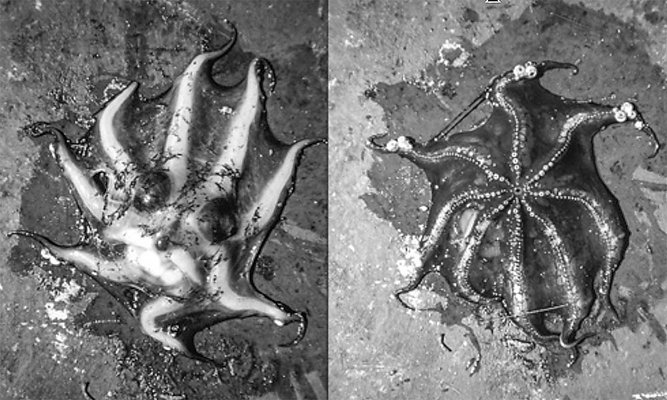
Figure. Opisthoteuthis dongshaensis, paratype. Left - Dorsal view. Right - Ventral view. Photographs from Lu (2010).
- Head
- Head wider than mantle; eyes large, laterally orientated; areolar spots absent.
- Fins
- Relatively long (up to 173% of ML), paddle-shaped; base deeply embedded in gelatinous tissue of mantle. Anterior and posterior margins of fins weakly convex; basal constriction poorly developed.
- Relatively long (up to 173% of ML), paddle-shaped; base deeply embedded in gelatinous tissue of mantle. Anterior and posterior margins of fins weakly convex; basal constriction poorly developed.
- Funnel and mantle
- Mantle attached to arm IV bases at level of 6th sucker.
- Funnel organ unknown.
- Median mantle adductor short and thin.
- Mantle attached to arm IV bases at level of 6th sucker.
- Arms
- Arm formula variable, no consistent pattern.
- Arms long (longest 349-541% of ML.
- Web formula variable, no consistent pattern.
- Web nodules absent.
- Web thick and gelatinous; web sectors vary from 20% to 85% of longest arm.
- First cirrus between suckers 3 and 4 or 4 and 5 on all arms.
- Sucker size sexually dimorphic, distinctly enlarged in males.
- Proximal sucker field of mature males with enlarged suckers; distal sucker field only on arms III and IV and bearing 3 or 4 enlarged to greatly enlarged suckers.
 Click on an image to view larger version & data in a new window
Click on an image to view larger version & data in a new window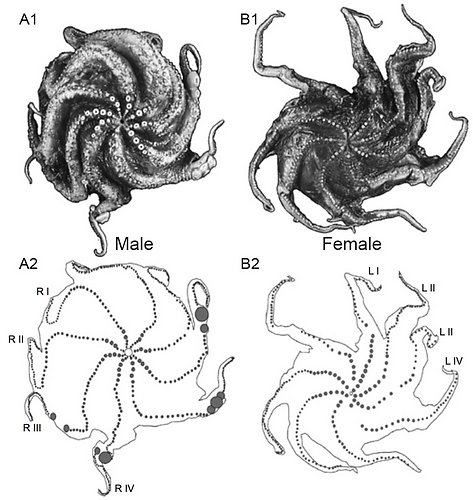
Figure. Oral views of O. dongshaensis. Top - Photographs. Bottom - Drawings. Left - Male, 35 mm ML. Right - Female, 34 mm ML. Photographs and drawings from Lu (2010).
- Viscera:Digestive tract
 Click on an image to view larger version & data in a new window
Click on an image to view larger version & data in a new window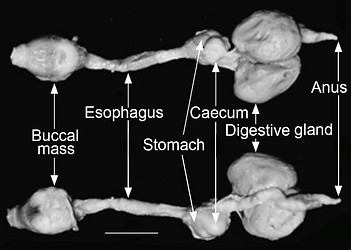
Figure. Digestive tract of O. dongshaensis, male, 45 mm Head Width. Top - Ventral view. Bottom - Dorsal view. Photograph from Lu (2010).
- xx
- xx
-
Optic nerve bundles
- Shell
xxx
Distribution
Type locality: Vicinity of the Dong Sha Island, South China Sea at approximately 19°23"N, 114°00' E and at a depth of 683 - 693 m.References
Lu, Chung-Cheng. 2010. A new species of Opisthoteuthis, O. dongshaensis sp. nov., from the South China Sea (Octopoda: Cirrata: Opsithoteuthidae). Zoological Studies, 49 (3): 405-420.
About This Page
Chung Cheng Lu

National Chung Hsing University Taiwan
Richard E. Young

University of Hawaii, Honolulu, HI, USA
Correspondence regarding this page should be directed to Chung Cheng Lu at
cclu@dragon.nchu.edu.tw
Page copyright © 2016 Chung Cheng Lu
All Rights Reserved.
- First online 27 February 2016
- Content changed 27 February 2016
Citing this page:
Lu, Chung Cheng and Richard E. Young. 2016. Opisthoteuthis dongshaensis . Version 27 February 2016 (temporary). http://tolweb.org/Opisthoteuthis_dongshaensis/149664/2016.02.27 in The Tree of Life Web Project, http://tolweb.org/




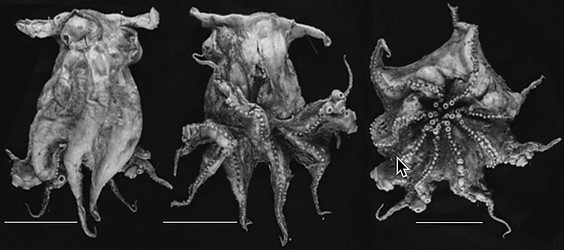
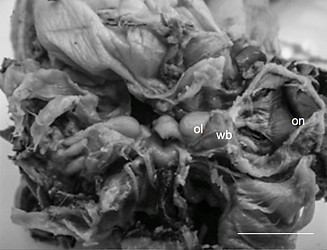
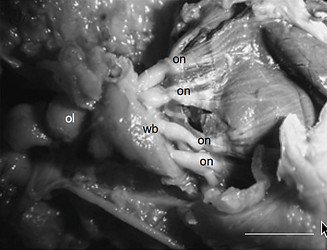
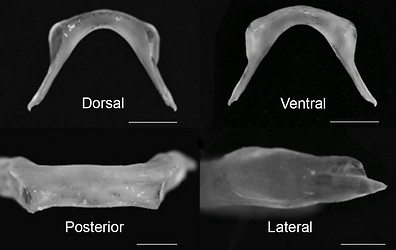


 Go to quick links
Go to quick search
Go to navigation for this section of the ToL site
Go to detailed links for the ToL site
Go to quick links
Go to quick search
Go to navigation for this section of the ToL site
Go to detailed links for the ToL site